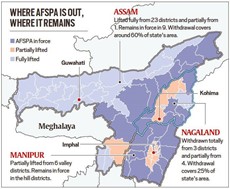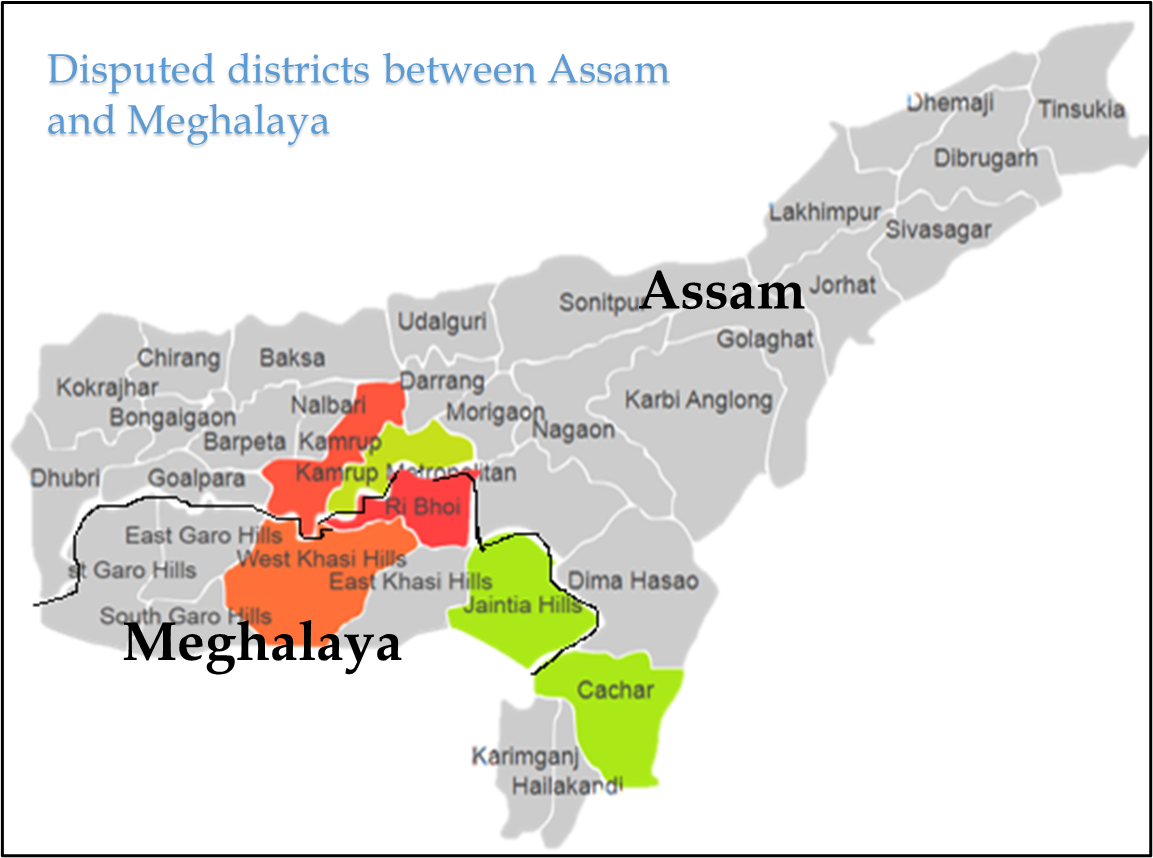Tuesday, 15th March 2022
Missile misfires
In News
India has recently acknowledged that technical malfunction of a missile has led to its accidental firing which eventually crashed into Pakistan.
About the News
- After picking off from Sirsa, 104 km from the nearest point on the border, the missile cruised for around 70-80 km within Indian territory and then suddenly changed direction mid-air to enter Pakistani territory before hitting the ground 124 km inside.
- Although neither India nor Pakistan has specified the type of missile that was fired, experts believe that the trajectory and other aspects carry the signature of a supersonic BrahMos missile.
- Although the two countries have an agreement for sharing information on tests of ballistic missiles but for other kinds of missiles including cruise missiles, they do not share information.
- Experts have raised concerns as cyber intervention is in neither country’s interest as nobody wants a situation between two nuclear countries.
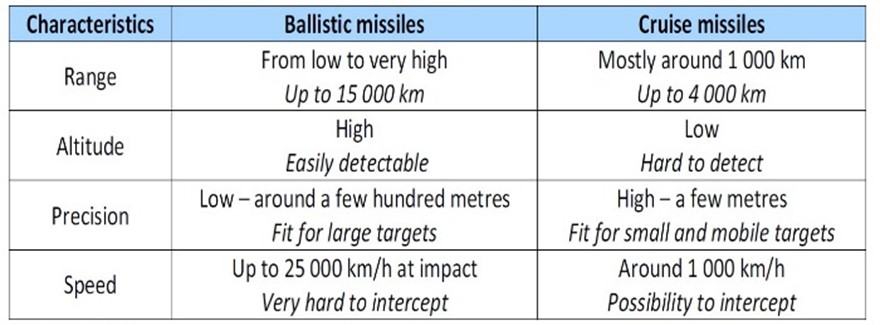
What is India-Pakistan missile testing notification pact?
- Pre-notification: Under pre-notification of flight testing of ballistic missiles agreement 2005, each country must provide the other an advance notification on flight test it intends to take for any land or sea launched, surface-to-surface ballistic missile.
- Notice to Air Missions (NOTAM): Before the test, the country must issue Navigational Warning (NAVAREA) to alert aviation pilots and seafarers, respectively.
- Peripheral limitations: Testing country must ensure that the launch site is not within 40 km, and the planned impact area is not within 75 km of either the International Boundary (IB) or the Line of Control (LoC). Also, the planned trajectory must maintain a horizontal distance of at least 40 km from the border.
- Advance notice: The testing country must notify the other nation no less than three days in advance of the commencement of a five-day launch window within which it intends to undertake flight tests of any land or sea launched, surface-to-surface ballistic missile.
- Channel of communication: The pre-notification has to be conveyed through the respective Foreign Offices and the High Commissions, as per the format annexed to this Agreement.
What are the possible reasons for the missile misfire?
- Feed-in of Coordinates: A cruise missile has to be given target coordinates when fired from the ground, and after that she is on her own while there are also some missiles for which the coordinates can be updated in flight. If the coordinates are not correct the missile follows a straight line.
- Cyber-attack: Jamming the missile while in flight, by some cyber means can affect the whole coordinates leading to changing the direction.
- Destruction fuse: Normally a missile has a destruct fuse, which means from the ground centre it is possible to destroy it in flight if the missile has gone haywire.
- Corrupt data: If the target data that has been fed into the missile gets corrupted during flight the destination, then the missile takes a different direction all together.
Sources:
Mumbai’s Net Zero Plan
In News
Mumbai has announced Mumbai Climate Action Plan (MCAP) to zero out carbon emissions by 2050, a target that puts it two decades ahead of India’s national goal and makes it the first city in South Asia to set such a timeline.
Probable Effects of Climate Change on the city of Mumbai
As per a study conducted by World Resources Institute (WRI), India on Mumbai’s vulnerability assessment, the city will face two major challenges—temperature rise, and extreme rain events which will lead to flooding.
- As per the vulnerability assessment of greenhouse gas and natural green cover, the city has witnessed a warming trend.
- The analysis has revealed a warming trend over 47 years (1973-2020) with an increase of 0.25°C per decade for the city.
- In 2019, Mumbai’s GHG emissions were 23.42 million tonnes of carbon dioxide emission, which is 8 tonnes CO2e per person.
- India’s richest city, Mumbai is also home to tremendous poverty, with slums and fishing villages along the southern coast that date to British rule.
- By 2050, rising sea levels are expected to flood those parts of the city and also 80% of Nariman Point in South Mumbai.
- In total, unabated climate change could cost the city $920 million.
About Mumbai Climate Action Plan (MCAP)
- The Mumbai Climate Action Plan (MCAP) has laid down a 30-year road map for the city to tackle the challenges of climate change by adopting inclusive and robust mitigation and adaptation strategies.
- After a vulnerability assessment of greenhouse gas (GHG) and natural green cover inventory over the last six months, the Brihanmumbai Municipal Corporation (BMC) prepared the plan with technical support from the WRI, India and the C40 Cities network.
- The action plan has set short, medium and long-term climate goals aimed towards zero emission of greenhouse gas or a net-zero target for 2050.
- Mumbai’s short-term priorities include the purchase 2,100 electric buses by 2023 at a cost of 130 billion rupees ($1.7 billion).
- The city will also spend on projects like retrofitting low-income homes with electricity-efficient equipment.
- It has been said that actions must be taken on priority across six strategic areas—sustainable waste management, urban greening and biodiversity, urban flooding and water resource management, energy and buildings, air quality and sustainable mobility.
- Mumbai may consider raising funds through green bonds announced by the federal government, and also from the Maharashtra State government funding for climate mitigation projects through the federal government and global lenders.
- This access to investments, along with a $6 billion annual budget, gives the city an advantage over peers to implement climate targets.
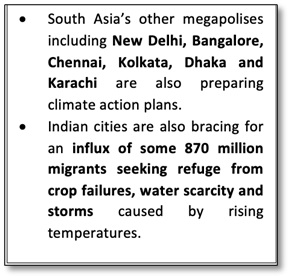
What are Climate Action Plans?
- Climate action plans are comprehensive roadmaps that outline specific activities that can be undertaken to reduce emissions and meet the goals of the Paris Agreement.
- Making climate change a priority, Mumbai signed the C40 Cities Deadline 2020 commitment, that aligns with the Paris Agreement, to reduce greenhouse gas (GHG) emissions to net zero by 2050.
- Deadline 2020 presents the first significant pathway for relating the ambition of the Paris Agreement to action on the ground.
- This would allow C40 cities, representing 650 million people and 25% of the world’s GDP, to deliver individual emissions trajectories consistent with limiting global temperature rise to 1.5 degrees above pre-industrial levels.
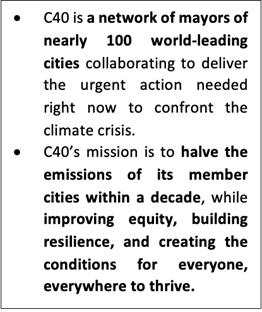
Sources:
- Mumbai becomes first South Asian city to detail net-zero roadmap:
- Mumbai announces net-zero roadmap with 2050 in sight, 1st south Asian city to set such timeline:
- Explained: What is the Mumbai Climate Action Plan all about?:
- City sets green targets for 2050 as Mumbai’s Climate Action Plan unveiled:
- About the Mumbai Climate Action Plan (MCAP):
- About the Mumbai Climate Action Plan (MCAP):
- Deadline 2020: How cities will get the job done:
- About C40:
RBI removes pricing caps for microfinance lenders
In News
The Reserve Bank of India (RBI) has removed caps on the pricing of small loans given by non-banking financial company-microfinance institutions (NBFC-MFIs).
About the news
- This move thus brings NBFC-MFIs on the same level as other such lenders, including banks.
- With this, the underwriting of loans will be done on a risk-based analysis, and a risk premium will be charged based on the borrower.
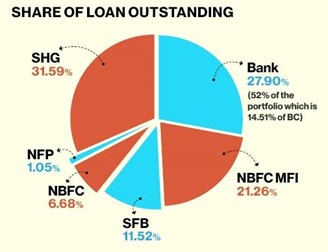
Understanding the existing guidelines and the revised changes
- Existing guidelines: The existing guidelines prescribe a maximum interest rate that a microfinance lender could charge on loans.
- This is 10-12 percentage points above the institution’s cost of funds, or 2.75 times the average base rate of the five-largest commercial banks, whichever is lower.
- Revised norms: All microfinance lenders are now required to put in place a board-approved policy for the pricing of loans.
- The policy should include a well-documented interest rate model and the different interest rate components, such as cost of funds, risk premium, and margin.
- It should also contain the range of spread of each component for categories of borrowers and a ceiling on the interest rate and all other charges applicable to the microfinance loans.
- Increase in Market Size: The annual household income level has been raised to ₹3 lakh (earlier, the income caps were ₹.25 lakh in rural areas and ₹2 lakh in other areas) for being eligible to avail of microfinance loans, thus increasing the market size.
- This revision of household income is a very progressive move with far-reaching implications as the needier, low-income households will now be able to access credit, that would take India closer to our financial inclusion goal.
- Limit of maximum repayment value: The limit on the maximum repayment value is 50% of the monthly household income to curtail over-lending to customers.
- Thus, if the household income is ₹3 lakh, the maximum loan instalment that a borrower needs to pay cannot exceed ₹1.5 lakh per year.
- Also that there would be no prepayment penalty on microfinance loans.
- Addressing the issue of over-indebtedness: Besides creating a level playing field, the framework will address issues of over-indebtedness and multiple lending, which were of paramount concerns for the sector.
- Reduction in the minimum requirement of microfinance Loans: RBI has given a breather to NBFC-MFIs by reducing the minimum requirement of microfinance loans of total loan assets to 75 % from 85% earlier, in sync with the harmonization of microfinance regulation for all lenders.
- Increased maximum limit on microfinance loans: There has also been an increase in the maximum limit on microfinance loans given by NBFCs that are not qualified as NBFC-MFIs to 25% from 10% earlier.
- Increasing the non-qualifying asset limit to a maximum of 25% will allow institutions to achieve a more balanced lending portfolio, reduce the cyclicity and volatility impact on the balance sheet, and strengthen the ability of institutions to weather any external risks.
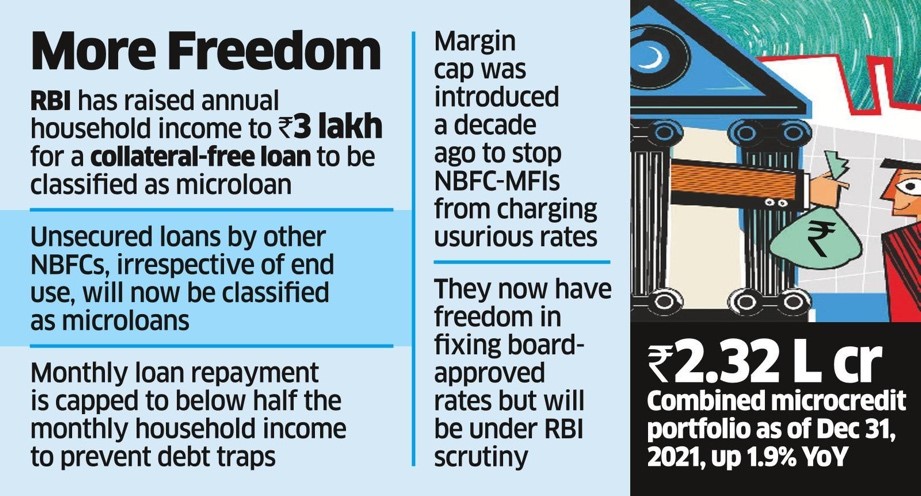
Source:
- RBI removes pricing caps for microfinance lenders
- Microfinance lenders should not charge usurious rates of interest, RBI says in revised norms for the sector
Image source:
World Consumer Rights Day
On March 15, 1983 World Consumer rights day was celebrated for the first time. Consumer Rights Day is a global event to encourage people to be aware of their consumer rights and duties so that they can make informed decisions. It was Consumer International that started observing this day and still celebrates it every year. Consumer rights mean that person who buys the goods, products or services has the right to know about the purity, quality, price and other standards. People are not aware of their rights and therefore this day is celebrated to protect the customers from fraudulent activities in the market. 15 March was chosen because it was on this day that U.S. President John Fitzgerald Kennedy mentioned four important consumer rights in his speech to Congress: Right to safety, Right to be informed, Right to choose and Right to be heard. The theme for world consumer rights day 2022 is "Fair Digital Finance". It calls for fair digital finance in the marketplace everywhere.

Sources:
India-UAE Trade Relations
In News
India and the United Arab Emirates (UAE) recently inked a Comprehensive Economic Partnership Agreement (CEPA) to provide a major fillip to the trade of goods and services between the nations.
The Comprehensive Economic Partnership Agreement (CEPA) between India-UAE
- The India-UAE CEPA marks the first trade agreement India has made with a major trading partner in over a decade. The last major FTA India signed was with Japan in 2011.
- Early harvest: An early harvest trade deal is one in which both parties sign off on a set of relatively easily achievable deliverables. The deal includes tariff reduction and market access for more exports followed by a comprehensive free trade agreement later.
- The agreement is the first in a series of FTAs that India is pursuing to boost exports sharply to 1 trillion dollars each in merchandise and services by 2030.
- India is also pursuing FTAs with Australia, UK, Canada, Israel and the EU. India could conclude an FTA with the GCC group of countries (Bahrain, Kuwait, Oman, Qatar, Saudi Arabia, and the UAE) by the end of the year.
- Under the agreement, the UAE is set to eliminate duties on 80 per cent of its tariff lines which account for 90 per cent of India’s exports to the UAE by value.
- The government has emphasised that this agreement contains strict rules of origin to prevent other countries from using the agreement to reroute their exports through UAE to benefit from lower tariffs.
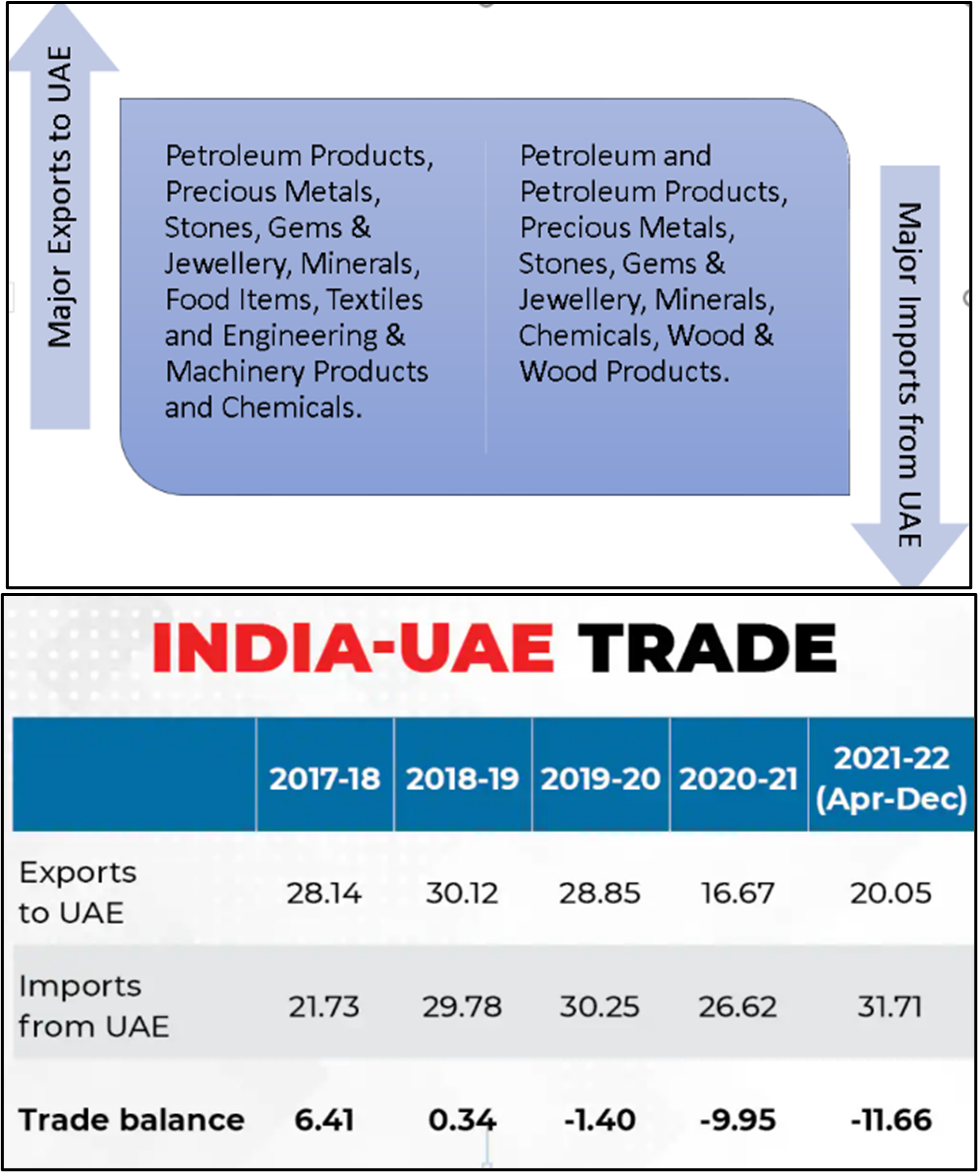
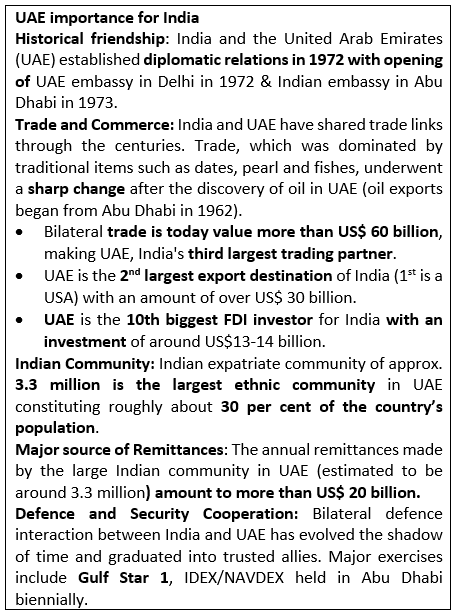
What is the importance of the trade deal with UAE?
- Promotion of trade inflows: It is expected to open a greater volume of trade flows immediately between the nations and provide benefits to a wide segment of Indian exports. The deal plans to raise bilateral trade to $100 billion within the next five years.
- CEPA with UAE would provide a fresh impetus to labour-intensive sectors such as gems and jewellery, textiles, leather, footwear, furniture, agriculture and food products, plastics, engineering goods, pharmaceuticals, medical devices and sports goods.
- According to official estimates, the India-UAE foreign trade agreement (FTA) may benefit $26 billion worth of domestic goods that are subjected to 5% duty.
- Better market access: Targeted specific goals such as tariff reduction on select items will promote market access and easy flow of targeted commodities.
- Leveraging advantage commodities: UAE accounts for 80 percent of India’s plain gold jewellery exports and 20 percent of studded jewellery exports. It is overall the third-largest export destination for all gems and jewellery shipments from India. India has pushed for easier export norms for textiles, electronics and, most importantly, gems and jewellery.
- Better competition in middle east markets: The UAE is a gateway to the entire Middle East region and the proposed abolition of the 5 percent import duty in UAE would lead to increased prosperity on both sides of the Arabian Sea.
- Bypassing GCC: The CEPA makes the UAE the preferred partner in the GCC. If a commodity is acceptable to the UAE, then objections to it by other GCC members become less defensible, because with the India-UAE agreement, Indian goods will flow to the other GCC countries as the UAE has no customs barriers.
- Growth for apparel sector: Indian apparel sector will grow in volume exported as UAE is a large retail market with players across the value chain including western fashion chains, wholesale buyers from North Africa and all over the Middle East.
- Balancing China: Deal would cement economic partnership with the UAE and provide the kind of clout and access that had been secured by China nearly a decade ago.
- Levering advantage Chabahar: India will be able to use the Chabahar port in Iran as a shipment hub as it would mean a greatly reduced distance to ports in the UAE.
Challenges faced by the India-UAE Relationship
- The Iran factor: There is an ongoing proxy war between Iran and Israel. The signing of Abraham Accords was considered a stab in the back of Palestinians and Muslims. India and Iran have friendly relations in many areas. But with an infuriated Iran, India may face a backlash as it warms to UAE.
- Abraham Accords was signed to bring a group of Arab states (led by the UAE) to normalize relations with the Jewish state Israel and was brokered by US in 2020.
- The China Factor: The UAE is China’s most important economic and politically stable partner in the middle east, being a major source of oil, a gateway for Chinese exports and “pivot city” in the BRI, and an important destination for diversified investment and construction. The border disputes between India and China may cause uneasiness to India-UAE ties.
- The Pakistan Factor: While India and Pakistan tussle at many fronts, including the unresolved border dispute, UAE and Pakistan share a very strong friendship based on religious ties. This duality in relations is an important consideration for India.
- Kafala system: Labour migration to the UAE is regulated by a private sponsorship system known as kafala, which have history of human rights violations including abduction or enforced disappearance and prosecution after making even seemingly minor demands, such as greater freedom of expression and political freedom.
- Human trafficking: Migrant workers from India are often trafficked into forced labour in UAE typically recruited by agents who charge high recruitment fees in exchange for secure work permits and employment in the UAE.
What are the areas where India and UAE can grow together?
- Investment: The UAE is the 10th-largest source of FDI in India but there is yet great untapped potential and a huge appetite to invest in India. India can act as key growth drivers and targets for outward investment for UAE Sovereign Wealth Fund (SWF) investments.
- Promoting Knowledge Economy: India can help UAE to “invest” in the development of the knowledge economy by tilizing deal for its highly skilled man power to leverage “golden visa” residency permits of UAE.
- These ten-year visas are granted to doctors, engineers, PhD scholars and specialists in high-end technology fields such as artificial intelligence (AI), Big Data, virology and epidemiology.
- Space Cooperation: India and the UAE can collaborate through the work of the UAE Space Agency (UAESA) and the Indian Space Research Organization (ISRO). For example, together, the two space agencies have developed the nano-satellite, Nayif-1.
- Integrating Gulf-Indian Ocean Security: Defense cooperation between the two nations can develop and boost India-UAE security preparedness and coordination for maritime security.
- Climate action and renewables: With UAE being the host of COP28 in 2023, both countries can strengthen cooperation towards accelerating climate action. The two countries can also work closely in the contexts of COP, the International Renewable Energy Agency (IRENA), and the International Solar Alliance (ISA).
- Cooperation in international arena: With the UAE being a non- permanent member of United Nation Security Council for 2022-23 and India having Presidency of G-20 in 2023, both nations can reinforce mutual support in multilateral areas to promote collaboration in economic and infrastructure spheres.
Conclusion: India-UAE relations have gained prominence in the backdrop of UAE’s “Economic Vision 2030,” a long-term economic diversification strategy, and India’s vision to become a USD 5 trillion economy and global powerhouse by 2024-25. The “Neighbourhood” and “Extended Neighbourhood” policies form the bedrock of Indian administration’s efforts to pursue this engagement. Shared economic visions and geopolitical outlooks can help the two sides to seek to expand cooperation across multiple domains, notably in investment, technology and the knowledge economy, and defence and security.
Question: The recent India-UAE FTA will benefit the Indian economy in many ways. Elaborate
Sources:
- India-UAE trade deal:
- India-UAE relations:
- Potential of India-UAE relations:
- China’s “Pearl”: The UAE Amid Great-Power Rivalry:
- Israel’s Rewarding Road to Normalization:
- Joint India-UAE Vision Statement - Advancing the India-UAE Comprehensive Strategic Partnership: New Frontiers, New milestones:
- CEPA: Fostering economic security between India and the UAE:
- Bilateral Economic & Commercial Relations:
- India and UAE sign CEPA; deal to cover almost 90% bilateral trade:
- Explained: India-UAE trade agreement and why it is significant:
- TRADE AGREEMENTS – THE INDIAN PERSPECTIVE:
Lingua villosa nigra
This is image of a Kerala man’s tongue that turned dark and hairy after he was put on a pureed diet following a stroke. The case, known medically as lingua villosa nigra, happened three months after the stroke left the patient’s left side paralysed. For three months, the man was fed only pureed and liquid food which led to the tongue’s discolouration and carpet-like hair growth. Black hairy tongue or BHT can be the result of a buildup of dead skin cells on the papillae of the tongue, which contains taste buds. These papillae can easily be affected by bacteria, yeast, tobacco, food or other substances. Other possible causes of BHT include poor oral hygiene, excessive alcohol intake, or changes in the mouth after the uses of antibiotics. The condition is common - an estimated 13 per cent of people develop black hairy tongue at some point in their life, although it is most common in adults over 40 years of age. This doesn’t cause any pain or problem and typically does not require any specific treatment other than proper and regular oral hygiene and care.

Source:
Centre for space sciences: Jammu
- Context: The Satish Dhawan Centre for Space Sciences has been inaugurated at the Central University of Jammu
- The centre that is set up will have facilities for geospatial data analysis, that will help in sustainable use of natural resources and in planning land-use patterns.
- It also has ground-based observations for atmospheric studies, research lab for astrophysics, atmospheric sensing and glacier studies lab for better use of large quantities of water stored in the form of seasonal snow, ice and glaciers in the rivers of north India.
- It has been set up as per the MoU signed between ISRO and the Central University of Jammu in 2018.
- The centre was named after the former chairman of ISRO-Satish Dhawan as he was a resident of Jammu and Kashmir, and a "real pride" of the Dogra
- The first course this year in the centre will have an intake capacity of 60 seats and the selection criteria will be IIT-JEEso that there are no allegations of discrimination.

Source:
- Centre for space sciences inaugurated in Jammu Central varsity
- Centre for Space Sciences inaugurated at Jammu Central University
Image source:
The Symbol “Z”
- Context: With continuing war in Ukraine, support for President Vladimir Putin’s actions within Russia has started to appear in an unusual symbolic form- the letter Z of the Roman alphabet.
- Symbols are powerful identifiers especially in war zones.
- "Z", a symbol that had first appeared on Russian tanks as they surrounded Ukraine, that has now become the graphic rallying point of the invasion.
- It is being widely compared with the Nazi swastika- even as Russia accuses Ukraine of being a "nest of neo-Nazis".
- The alphabet represents a number of slogans that begin with the Russian word “for” (Za): “For Victory”; “For Peace”; as well as other phrases starting with the letter “Z”.
- The letter has often appeared on the Internet along with the hashtag #СвоихНеБросаем, meaning “We don’t abandon our own”.
- Politicians, influencers and others have been seen wearing the letter on clothes and as badges, and putting Z stickers on vehicles. People have also been painting giant Z signs on roads, billboards and building facades, and holding up signs with Z on them.
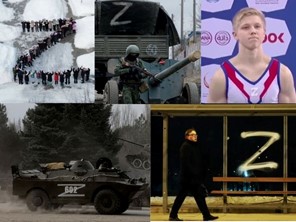
Source:
- Explained: Why are Russians using the letter Z to show support for the war in Ukraine?
- Ukraine war: Why is Russia using the letter 'Z' and what does it mean?
Image source:
Owl Conservation
- Context: Traffic and WFF-India have launched ID cards for owl species as part of their conservation efforts.
- The ID card is in a form of a downloadable booklet which has illustrations of the owls, the key features of each species, its distribution in India and its size comparison with the house sparrow and crow for easy identification.
- These IDs (in both English and Hindi) have been issued to enable law enforcement authorities to accurately identify 16 commonly-found owl species in illegal trade.
- India is home to about 36 species of owls all of which are protected under the Wildlife (Protection) Act, 1972 and are enlisted under CITES, which restricts their international trade.
- Owls are one of the most enigmatic creatures of the wild.
- They are nocturnal hunters that are often found in illegal wildlife trade in India due to various superstitions and taboos attached to them.
- They play an important role in the ecosystem. They enhance agricultural productivity by keeping a check on the rodent populations.
- However, they are trapped in large numbers for sacrifice and for their use in multiple rituals often promoted by local mystic practitioners.
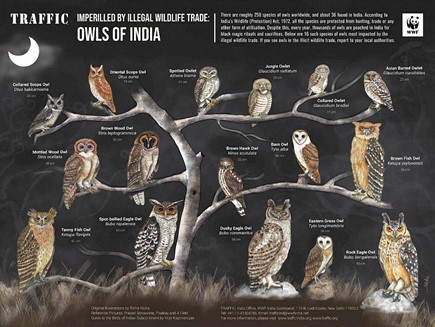
Source:
- An effort to save the enigmatic owls in India
- TRAFFIC & WWF Launches New Identification Tool To Protect Owls
Image source:
Covovax
- Context: The Drugs Controller General Of India’s (DCGI) has recently granted restricted emergency use authorisation to
- Covovax is Serum Institute of India’sCOVID-19 vaccine for the 12-17 years age group.
- It requires two dosesand is stable at 2 to 8 °C refrigerated temperatures. The vaccine uses a novel platform and is produced by creating an engineered baculovirus containing a gene for a modified SARS-CoV-2 spike protein.
- It is manufactured by technology transfer from Novavax and is approved by the European Medicines Agency for conditional marketing authorisation and also granted emergency use listing by WHO in 2020.
- It is the fourth vaccine to receive the regulator’s nod for use among those below 18 years.
- India has been using Bharat Biotech’s Covaxin to vaccinate adolescents between 15-18 years. It had received approval for emergency use in 12 to 18 year olds in2021.
- ZyCov-D is the first vaccine cleared by DCGI for inoculation of those aged 12 years and above in 2021.

Source:
- Drug regulator grants emergency use authorisation to Covovax for 12-17 age group
- WHO lists 9th COVID-19 vaccine for emergency use with aim to increase access to vaccination in lower-income countries
Image source:
Time to reassess what is good, what is bad, and what is ugly about India’s tech regulations: ORF
Essence: As per the author, there is a need to regulate tech due to accelerated opportunities and to address widespread risks. First, we need to understand the nature of technology linked risks such as bullying, online gambling, money laundering, etc. Second, it throws challenges to governance, for example while research suggests India is among the top five countries, in terms of income potential from online gambling but recent investigations have revealed instances of offshore gambling websites channelling black money. Third, it is necessary to be creative while embracing new mode of regulating tech. There needs to be a clear understanding of what is legal, what is illegal and what may be illegal and yet requires regulations to serve and protect users and citizens. For example, recent step by India to tax cryptocurrency assets but not recognising these as legal tenders.
Why should you read this article?
- To understand the opportunities and the risks technology brings.
- To know about the challenges to regulation of tech and how to regulate it by embracing new mode of regulation.
Source:
The India-UAE CEPA: India’s renewed love for FTAs: ORF
Essence: India has signed a free trade agreement with the UAE and many more with nations like Australia and Canada are in the pipeline. This provides an opportunity to contemplate on the merits and challenges of entering into such trade agreements. Economically, consumers benefit by cheaper imports but domestic manufacturers may suffer if they fail to compete. However, if India could make good use of export opportunities, we can not only create more employment but also earn foreign exchange.
The geo-Political cost benefit analysis is another dimension to consider while evaluating any trade agreement. We should take a call on any future FTAs only after taking a holistic view of our interests.
Why should you read this article?
- To understand advantages India is expected to reap by signing a trade agreement with the UAE.
- To understand dimensions which must be analyzed before signing trade agreements with a country.
Source:
Ukraine invasion and the great geopolitical reset: IE
Essence: The editorial provides a holistic viewpoint on how the wars in due course of history, and especially the Ukraine-Russia war, could be consequential for global geo-politics. While on one hand, the European countries have declared that they aren’t at war with Russia, however, assistance pours in to support the resistance against Russian invasion.
The flux in power dynamics shows a reset of relationship between US-Russia-China, with the latter two befriending each other. A concurrent development is the increased association and stronger partnership between USA and Europe, and alignment of European powers with such associations. Eg is Germany’s rearmament and EU’s energy imports, which it plans to diversify from Venezuela, Saudi Arabia, and Iran. A similar evolving strategic stance is visible in Asian countries like Japan, South Korea, Philippines, etc. towards militarization. Though a challenge for ASEAN to move away from Chinese economy and for India to move away from Russian defense supplies, the situation also provides an opportunity to reset these priorities.
Eventually, when it comes to war, “values” necessarily yield to “interests”.
Why should you read this article?
- To understand the global geo-political dynamics during the Russia-Ukraine war times.
- To know how war resets relationship and priorities of stakeholders.
Source:
The Signal School
Background
In Ahmedabad, 10 buses have been painted yellow and deployed as classroom for the underprivileged children around the city.
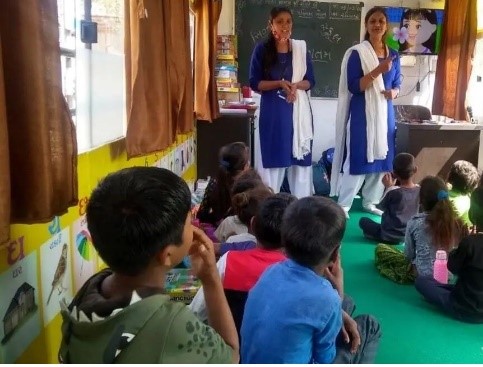
About the initiative
- The Signal School initiative has been implemented by the Ahmedabad Municipal Corporation (AMC), Municipal School Board and the Gujarat State Legal Services Authority (GSLSA).
- These bus classrooms are trying to imparts education to those children who have not been able to attend any formal education.
- It aims is to introduce them into the mainstream education in the nearest municipal school after a period of 6 months depending on their learning ability.
- Each of these schools are painted with bright colours to make the learning more fun, they come with a television screen, a writing board, a small desk and chair for the instructor, and toys and games for children.
- The parents of the children have been made aware that education will eradicate poverty and open up new vistas for the children.
Quote: “Children have to be educated, but they have also to be left to educate themselves.”- Ernest Dimnet
Source:
Image source:
Share the article
Get Latest Updates on Offers, Event dates, and free Mentorship sessions.

Get in touch with our Expert Academic Counsellors 👋
FAQs
UPSC Daily Current Affairs focuses on learning current events on a daily basis. An aspirant needs to study regular and updated information about current events, news, and relevant topics that are important for UPSC aspirants. It covers national and international affairs, government policies, socio-economic issues, science and technology advancements, and more.
UPSC Daily Current Affairs provides aspirants with a concise and comprehensive overview of the latest happenings and developments across various fields. It helps aspirants stay updated with current affairs and provides them with valuable insights and analysis, which are essential for answering questions in the UPSC examinations. It enhances their knowledge, analytical skills, and ability to connect current affairs with the UPSC syllabus.
UPSC Daily Current Affairs covers a wide range of topics, including politics, economics, science and technology, environment, social issues, governance, international relations, and more. It offers news summaries, in-depth analyses, editorials, opinion pieces, and relevant study materials. It also provides practice questions and quizzes to help aspirants test their understanding of current affairs.
Edukemy's UPSC Daily Current Affairs can be accessed through:
- UPSC Daily Current Affairs can be accessed through Current Affairs tab at the top of the Main Page of Edukemy.
- Edukemy Mobile app: The Daily Current Affairs can also be access through Edukemy Mobile App.
- Social media: Follow Edukemy’s official social media accounts or pages that provide UPSC Daily Current Affairs updates, including Facebook, Twitter, or Telegram channels.


